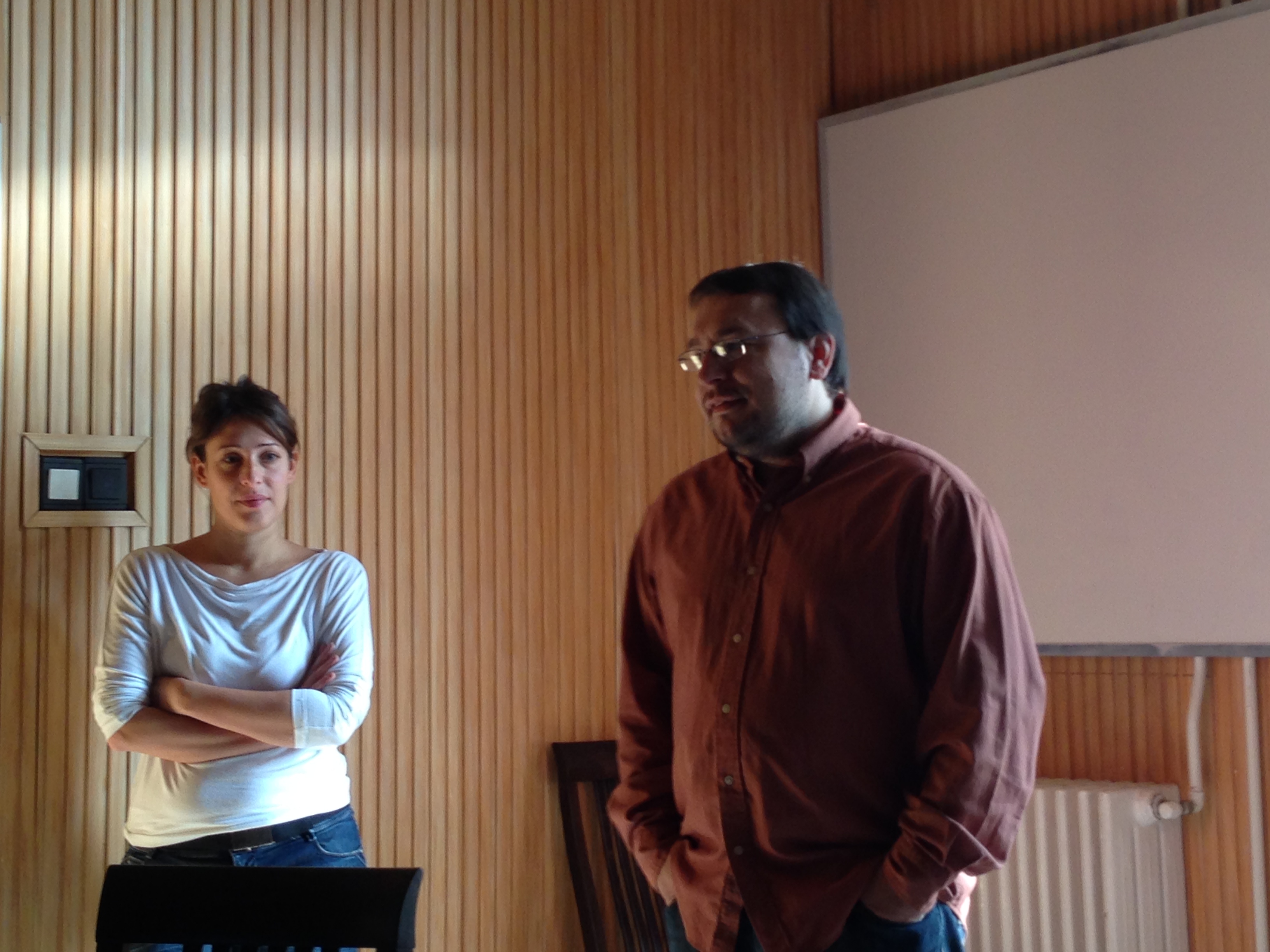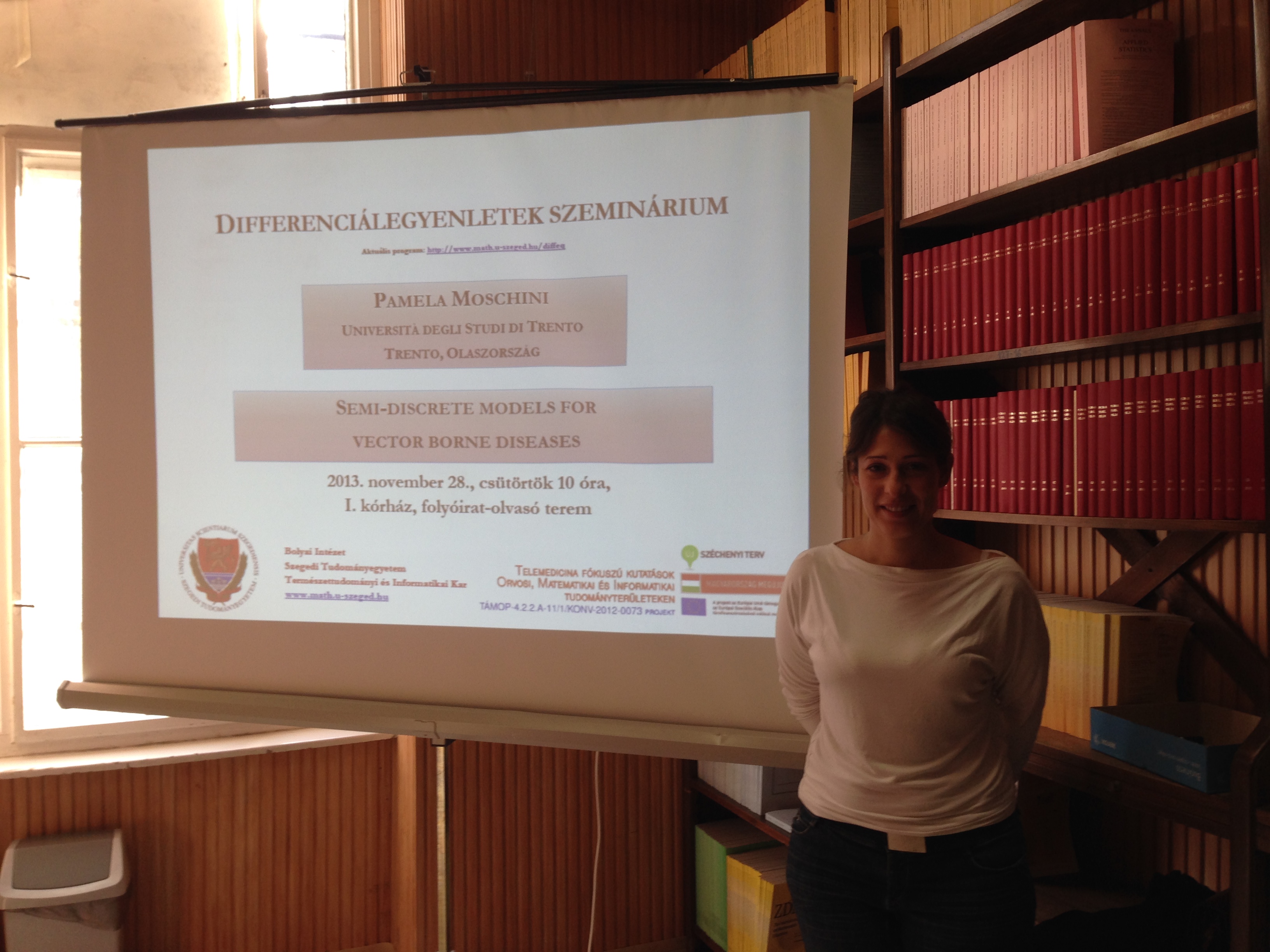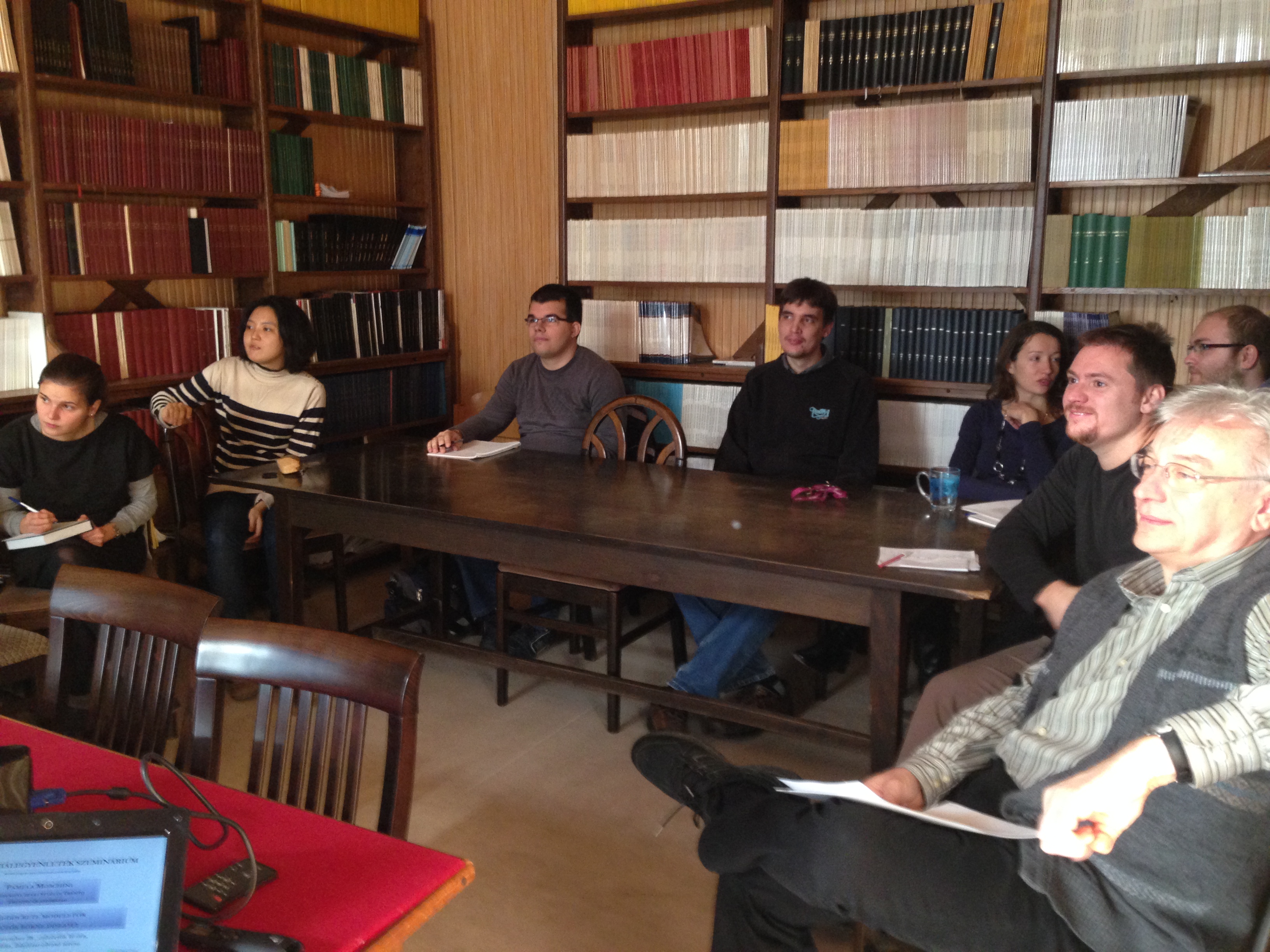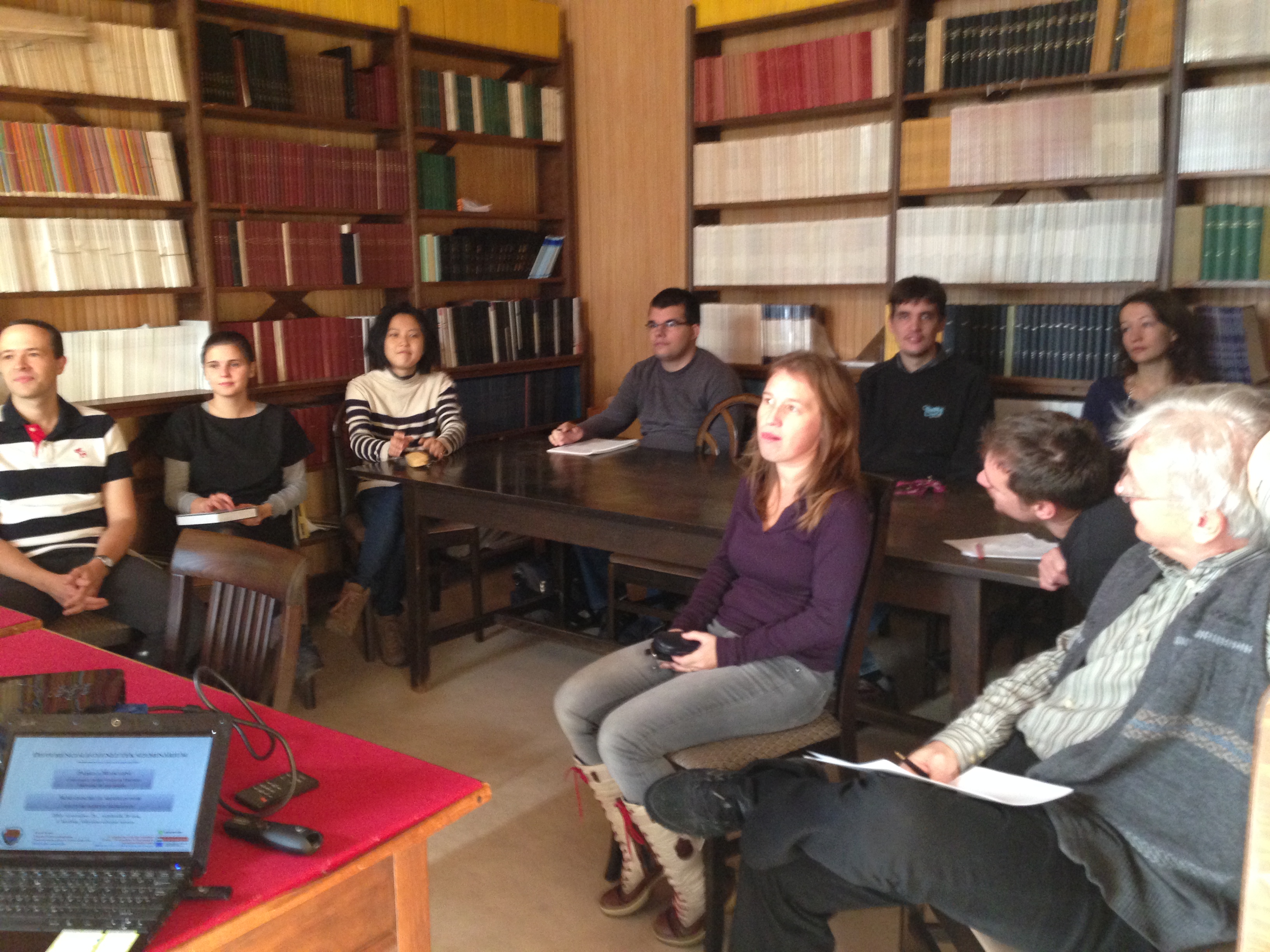Pamela Moschini
(UniversitŔ degli Studi di Trento, Trento, olaszország)
Semi-discrete models for vector borne diseases
Absztrakt:
Several
models have been proposed for West Nile virus, they consider migration
of birds population, the intermediates stages of mosquito life cycle,
the feeding preferences and also the heterogeneity of the hosts. They
do not take into account the seasonality of the disease. In this talk I
will present a semi-discrete model for the transmission dynamics of
vector-borne diseases. Here the transmission in a host population with
a vector population is modelled in a SIS/SIR
epidemiological framework, where contact between host and vector is
assumed to occur only during the summer of each year. I will discuss
two different types of threshold for the
spread of the disease are obtained: a ”shor-term threshold” and a ”long-term threshold”. The last one is compared to the definition of the basic reproduction number R0 for periodic continuous-time models, proposed by Bacaër and co-workers showing that they yield the same threshold. Finally I will show some simulations. The resulting behaviour may be reminiscent of the outbreaks of West Nile virus in Southern Europe.
spread of the disease are obtained: a ”shor-term threshold” and a ”long-term threshold”. The last one is compared to the definition of the basic reproduction number R0 for periodic continuous-time models, proposed by Bacaër and co-workers showing that they yield the same threshold. Finally I will show some simulations. The resulting behaviour may be reminiscent of the outbreaks of West Nile virus in Southern Europe.




